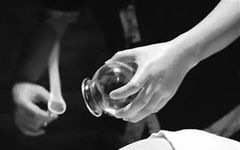

As the morning dew evaporates, the autumn winds have already begun to stir. The summer colors fade, and the leaves rustle with the sounds of autumn.
—— Tang Dynasty, Liu Yanshi, “Beginning of Autumn”
The sliding cupping therapy (走罐疗法, zǒu guàn liáofǎ) utilizes cups as tools, applying a suitable amount of lubricant to the rim of the cup and the affected area. By using heat to expel air, a negative pressure is created, allowing the cup to adhere to the skin. The practitioner then moves the cup back and forth over the affected area, causing the skin to redden or bruise, thus preventing and treating diseases. This method integrates warming moxibustion, cupping, scraping, massage, and herbal therapy, acting comprehensively on the body to achieve the goal of “treating diseases when present, strengthening the body when absent,” allowing the body to truly recover.


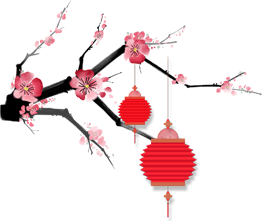
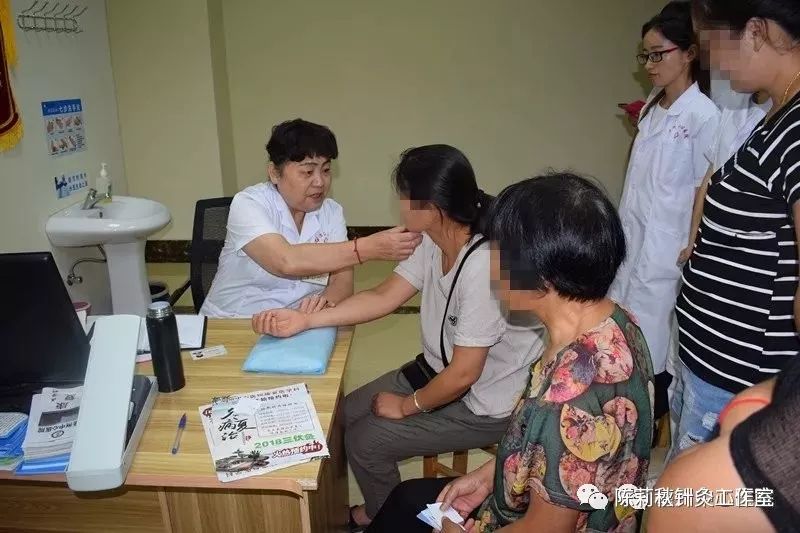
〖Acupuncture Points〗
Back acupuncture points for sliding cupping: Dazhui (大椎穴, Great Vertebra), Taodao (陶道穴, Tao Path), Shenzhu (身柱穴, Body Pillar), Shendao (神道穴, Spirit Path), Zhiyang (至阳穴, Ultimate Yang), Jizhong (脊中穴, Middle of the Spine), Zhichuan (治喘穴, Treat Asthma), Jianjing (肩井穴, Shoulder Well), Quyuan (曲垣穴, Curved Wall), Tianzong (天宗穴, Heavenly Ancestor), Mingmen (命门穴, Gate of Life), Yaoyu (腰俞穴, Lumbar Shu), Yaoyangguan (腰阳关穴, Lumbar Yang Pass), Shangxiandian (上仙点穴, Upper Immortal Point), Liuhua Jiao (六华灸穴, Six Flower Moxibustion Point), Fengmen (风门穴, Wind Gate), Feiyu (肺俞穴, Lung Shu), Xinyu (心俞穴, Heart Shu), Geyu (膈俞穴, Diaphragm Shu), Ganyu (肝俞穴, Liver Shu), Gaohuang (膏肓穴, High Hollow), Zhishi (志室穴, Will Chamber), Jianwaiyu (肩外俞穴, Outer Shoulder Shu), Jueyin (厥阴俞穴, Jueyin Shu), Sanjiao (三焦俞穴, Triple Burner Shu), Dachang (大肠俞穴, Large Intestine Shu), Guanyuan (关元俞穴, Gate of Origin Shu), Xiaochang (小肠俞穴, Small Intestine Shu), Pangsang (膀胱俞穴, Bladder Shu).
Upper limb acupuncture points: Neiguan (内关穴, Inner Pass), Waiguan (外关穴, Outer Pass), Quchi (曲池穴, Curve Pool), Shizhu (尺泽穴, Cubit Marsh), Zhiyang (治痒穴, Treat Itch), Kongzui (孔最穴, Hole Most), Lieque (列缺穴, Broken Sequence), Yangchi (阳池穴, Yang Pool), Shenmen (神门穴, Spirit Gate), Hegu (合谷穴, Union Valley), Zhongzhu (中渚穴, Middle Islet), Shaochong (少冲穴, Lesser Surge), Luozhen (落枕穴, Falling Pillow), Zhijian (指间穴, Interdigital), Taiyuan (太渊穴, Great Abyss), Kounai (口内穴, Oral), Weichang (胃肠穴, Stomach and Intestine), Shousanli (手三里穴, Hand Three Miles).
Lower limb acupuncture points: Xiyan (膝眼穴, Knee Eye), Liangqiu (梁丘穴, Ridge Mound), Fuliu (复溜穴, Returning Flow), Yinggu (阴谷穴, Yin Valley), Xuehai (血海穴, Sea of Blood), Chengshan (承山穴, Supporting Mountain), Jiexi (解溪穴, Stream Relief), Weizhong (委中穴, Middle of the Weaving), Zusanli (足三里穴, Three Miles of the Foot), Yanglingquan (阳陵泉穴, Yang Mound Spring), Yinlingquan (阴陵泉穴, Yin Mound Spring), Sanyinjiao (三阴交穴, Three Yin Intersection), Baili (百里穴, Hundred Li).
Foot acupuncture points: Yongquan (涌泉穴, Gushing Spring), Dadun (大敦穴, Great Rush), Taichong (太冲穴, Great Surge), Taibai (太白穴, Great White), Taixi (太溪穴, Great Stream), Shenmai (申脉穴, Shen Pulse), Qiuxu (丘墟穴, Mound Ruins), Kunlun (昆仑穴, Kunlun), Zulin (足临穴, Foot Approach), Xingjian (行间穴, Between the Steps), Linaiting (里内庭穴, Inner Courtyard), Xiali (下痢穴, Lower Diarrhea), Gao Xueya (高血压点穴, High Blood Pressure Point), Dier Lidui (第二厉兑穴, Second Li Dui), Disan Lidui (第三厉兑穴, Third Li Dui), Ajilisi Tendon Point (阿基里斯腱穴, Achilles Tendon Point).
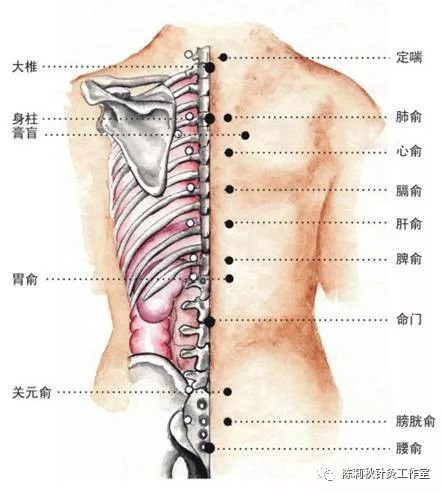
〖Sliding Cupping Method〗
1. Master the suction strength of cupping. Light suction: After cupping, the skin inside the cup protrudes about 3 mm due to negative pressure, or use medium or small-sized cups; Heavy suction: The skin inside the cup protrudes about 4 mm, or use large-sized cups.
2. Initiate the sliding cupping technique. One hand (left) holds the cup near the skin, while the other hand (right) grips the cup and pushes it away, repeating the movement several times.
3. During sliding cupping, assess the patient’s condition to differentiate between deficiency and excess, and based on the meridians of the cupping area, apply tonifying techniques in the direction of the meridian and draining techniques against it.
4. Control the frequency of sliding cupping. Slow sliding: approximately one back-and-forth movement per second; Fast sliding: approximately two back-and-forth movements per second.
5. Combine suction strength and frequency. Depending on clinical needs, choose from light suction with slow sliding, light suction with fast sliding, heavy suction with slow sliding, or heavy suction with fast sliding.
6. Control the duration of sliding cupping. Each set of acupuncture points is generally cupped for about 5 to 10 seconds as needed.
7. Closely observe the cupping marks. Continue cupping until the local skin shows light red, red, deep red, or slight purple.
8. Treatment principles. Generally, heavy suction, fast sliding, longer duration, and skin color showing deep red or slight purple indicate strong stimulation, suitable for excess conditions, or cupping on the back, waist, and limbs; light suction, slow sliding, shorter duration, and skin color showing light red or red indicate mild stimulation, suitable for deficiency conditions, or cupping on the chest and abdomen.
9. Treatment schedule. For acute conditions, after the first cupping, depending on the condition and the absorption of the cupping marks, it may be necessary to wait 12 to 24 hours or choose different acupuncture points for the next cupping; for chronic conditions or rehabilitation cases, generally perform cupping every 3 days, with a treatment course of 3 to 5 days, and after a two-week break, continue cupping.

〖Cupping Mark Colors〗
1. Dark purple cupping marks indicate blood stasis, such as obstructed menstruation, dysmenorrhea, or insufficient blood supply to the heart. If the affected area is significantly cold or the marks do not fade after several days, it indicates a prolonged condition. If large areas of dark purple marks appear, it suggests significant exposure to wind and cold, requiring symptomatic treatment, primarily to expel cold and eliminate pathogens.
2. Purple cupping marks with patches generally indicate cold gathering and blood stasis.
3. Cupping marks with scattered purple spots of varying depths indicate qi stagnation and blood stasis.
4. Light purple with blue patches indicates a blood condition, accompanied by blood stasis; for example, if it appears at the kidney shu point, it suggests kidney deficiency, and if at the spleen shu point, it indicates qi deficiency with blood stasis.
5. Bright red cupping marks generally indicate yin deficiency, or deficiency of both qi and yin.
6. If there are no cupping marks, or if they appear and immediately disappear after cupping, returning to normal color, it indicates that the pathogenic factors are still mild.
7. If the cupping marks are pink without spots and immediately return to normal skin color, it indicates that the body is free of disease.
Note:
Normal diagnostic color: pink

〖Effects of Sliding Cupping〗
Sliding cupping therapy can expel cold and dampness, unblock meridians, eliminate stagnation, promote qi and blood circulation, reduce swelling and pain, and detoxify and clear heat. It helps to adjust the balance of yin and yang in the body, relieve fatigue, and enhance physical fitness, thus achieving the goal of strengthening the body and curing diseases. Sliding cupping can be widely applied to conditions such as qi and blood stagnation, organ dysfunction, and external pathogens, including low back pain, shoulder periarthritis, sciatica, colds, fevers, hypertension, bronchitis, asthma, chronic gastroenteritis, and acne, with excellent results.
Modern research shows that sliding cupping therapy can improve blood and lymph circulation, enhance the function of tissues and organs, increase cell activity, boost the immune system, promote metabolism, eliminate toxins from the body, and improve the internal environment, raising the pain threshold and tolerance, thus normalizing the body’s state and delaying aging, keeping the body’s functions vibrant for a long time.
Treatable Diseases:
1.Respiratory diseases such as colds, fevers, coughs, and asthma. Back cupping can directly affect the Feishu (肺俞穴, Lung Shu), Fengmen (风门穴, Wind Gate), Dazhui (大椎穴, Great Vertebra), Dingchuan (定喘穴, Stop Asthma), and Shenyu (肾俞穴, Kidney Shu), invigorating yang qi and unblocking the meridian qi to expel wind, cold, dampness, and heat pathogens.
2.Digestive system diseases are suitable for digestive disorders, loss of appetite, and diarrhea caused by spleen and stomach deficiency. By stimulating the back shu points of the spleen, stomach, liver, and gallbladder, it can regulate the qi of the spleen and stomach and the liver and gallbladder.
3. Otolaryngological diseases such as acne, red and swollen eyes, styes, and oral ulcers. Fire is a yang pathogen that easily attacks yang positions; otolaryngological diseases are often caused by excessive internal fire disturbing the clear orifices. Back cupping can draw out the stagnant internal fire and regulate the balance of yin and yang in the meridians.
4. Soft tissue diseases Soft tissue diseases in the lumbar and back areas are often caused by exposure to wind, cold, dampness, or fatigue. Sliding cupping can effectively eliminate

〖Precautions〗
Precautions: After cupping, patients should keep the treated area warm to avoid further exposure to wind and cold. In principle, after large-area cupping (such as back cupping), avoid bathing for 24 hours. After cupping, clean any residual lubricant with a clean cotton ball or tissue, and drink a cup of warm water to replenish fluids, enhancing blood circulation and detoxification.
Contraindicated populations: Patients with leukemia, skin allergies or ulcerated areas, large blood vessels, pregnant women, and those with neurological disorders during menstruation, and children under 6 years old.
Professor Chen’s Warm Reminder
Sliding cupping (拔罐, báguàn) should be performed by a professional doctor:
Sliding cupping therapy has a wide range of applications and high demand, leading to an increasing number of places offering cupping treatments in the health market. In addition to hospitals, many massage parlors, beauty salons, health clubs, and foot massage shops also provide sliding cupping services.
However, sliding cupping is a specialized TCM therapy that requires knowledge of acupuncture points and mastery of techniques, ideally performed by licensed TCM practitioners. If performed without systematic training, random sliding cupping treatments can potentially harm the body, causing burns, skin damage, pain, or even worsening the condition or causing new diseases.
In some beauty salons and foot massage shops, many service personnel performing sliding cupping therapy are merely trained beauticians or health managers, not qualified medical professionals. Improper operations can lead to health issues. Many hospitals have treated cases of improper cupping leading to problems, ranging from mild burns and muscle damage to severe burns over large areas. As a result, TCM sliding cupping may not “treat diseases” but instead “cause diseases.”
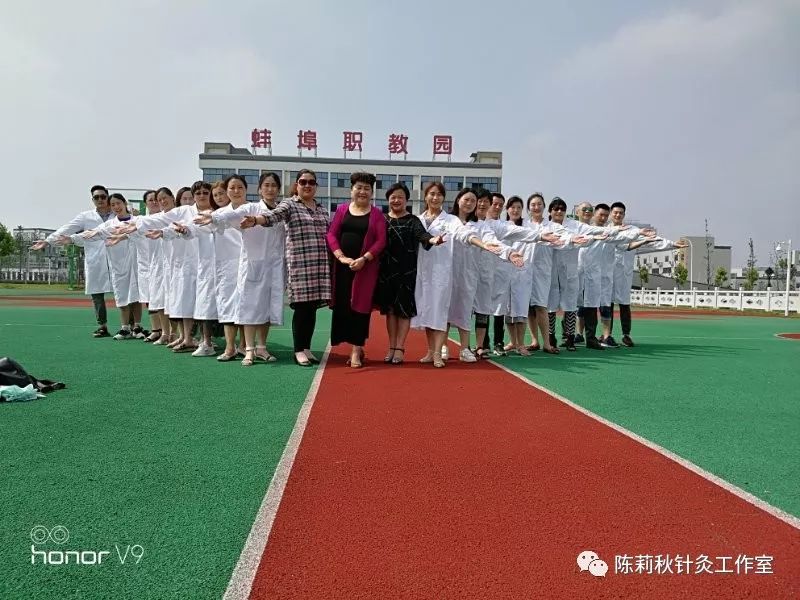


 Next Issue PreviewAutumn Health Preservation — Discussing Calcium Supplementation through Food and Medicine
Next Issue PreviewAutumn Health Preservation — Discussing Calcium Supplementation through Food and Medicine 
 Long press the QR code below and follow for more health knowledge
Long press the QR code below and follow for more health knowledge



